by Martin J. Greenberg and John Wilson
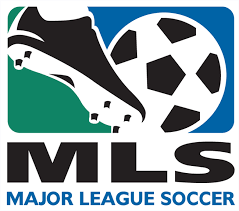 INTRODUCTION
INTRODUCTION
The ultimate goal of the Major League Soccer (“MLS”) is to expand its fanbase by adding more franchises and drawing from both in-stadium and broadcast revenues. It is vital for an MLS franchise (or an expansion franchise) to have a soccer-specific stadium in a downtown area planned for, already financed, or already created. Since soccer-specific stadiums were introduced to the MLS by Lamar Hunt (“Hunt”), they have been vital to the success of individual MLS franchises as well as the overall MLS brand.
I. ORIGIN, COLUMBUS CREW, AND LAMAR HUNT
Hunt was born in El Dorado, Arkansas to oil tycoon H.L. Hunt and Lyda Bunker.[1] He was raised in Dallas, Texas and graduated from Southern Methodist University in 1956 where he played college football.[2] Using his oil wealth, Hunt co-founded the American Football League and the North American Soccer League.[3] Hunt was also one of the original founders of MLS where he owned two teams: the Columbus Crew and the Kansas City Wizards (now Sporting Kansas City).[4]
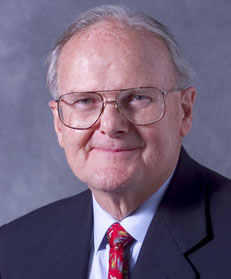
The Columbus Crew played their first three seasons at Ohio Stadium on the campus of the Ohio State University.[5] During games, large sections of the stadium were blocked off to reduce capacity from approximately 90,000 to 25,243.[6] Although the Crew enjoyed success at Ohio Stadium during their tenure there, the large seating capacity, limited field size, and lack of permanent field lights made the stadium ill-suited for soccer.[7]
In 1999, Hunt financed the construction of the Columbus Crew Stadium, the first of several large soccer-specific stadiums in the United States.[8] The construction cost of US$28.5 million was covered entirely by Hunt and his sports group.[9] The stadium is located on the grounds of the Ohio Expo Center and State Fairgrounds.[10] The seating capacity was originally 22,555 until 2008 when construction of a permanent stage in the north end zone reduced seating capacity to the current 20,455, with room to expand to 30,000 total seats for concerts.[11]
The Crew Stadium’s opening was the soccer story of the year in 1999. Some 39 publications ran more than 80 articles on the Stadium and its inaugural game.[12] Those articles reached an audience of more than 40 million readers, creating an estimated value of more than $700,000 in advertising.[13]
After nearly 15 years of the Crew Stadium not having a corporate sponsor, the Crew announced naming rights were sold to Mapfre Insurance on March 3, 2015.[14] The team had been attempting to sell stadium naming rights since it opened in 1999 without success.[15]
II. CHARACTERISTICS OF SOCCER-SPECIFIC STADIUMS
A soccer-specific stadium refers to a sports stadium either purpose-built or fundamentally redesigned for soccer and whose primary function is to host soccer matches, as opposed to a multi-purpose stadium which is used for a variety of sports.[16]
A soccer-specific stadium typically has amenities, dimensions, and scale suitable for soccer in North America, including a scoreboard, video screen, luxury suites and possibly a roof.[17] The seating capacity is generally small enough to provide an intimate setting, between 18,000 and 30,000 for a MLS franchise.[18] In 1999, the Columbus Crew Stadium (now Mapfre Stadium) was built, dawning the first soccer-specific stadium used by an MLS franchise. While Columbus Crew Stadium acted as a blueprint for many later soccer-specific stadiums, it was a little ahead of its time in that it had trouble filling its 20,145 seats on a game by game basis.[19]
A very important aspect of a soccer-specific stadium is that it is owned by the MLS franchise. In owning a facility, the team determines prices for parking, ticket sales, and merchandise and essentially controls both input and output.[20] This level of control is very important in that a franchise can restrict the number of seats and increase price. It also allows franchises to create more suites, press boxes, standing room only areas, and supporter group areas as seen in Rio Tinto Stadium in Sandy, Utah.[21] As discussed in Part IV, Sporting Kansas City has employed this strategy to great effect, cultivating a rowdy pub culture atmosphere that is revered by the home team and a nightmare for visiting teams.[22]
The most notable feature of a soccer-specific stadium is its canopy. The purpose of the canopy is to protect fans from the outside weather while trapping noise inside the stadium and re-directing it to the field of play.[23] Due to soccer-specific stadiums small stature, it is important to trap noise inside the stadium and create a more intimate atmosphere for soccer fans.
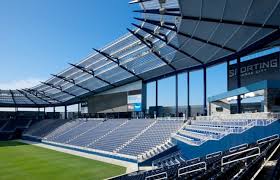 Architects of the current soccer stadiums built between 2008-2012 tend to tailor their designs to surrounding areas and the identity of the city itself. To illustrate, Talen Energy Stadium in Chester, PA, encapsulates Philadelphia’s historical architecture with brick and natural stone facade exterior. The sideline roofs are supported by a truss system.[24] Similarly, Rio Tinto Stadium was constructed to accentuate the Wasatch Mountain Range, which overshadows the stadium.[25]
Architects of the current soccer stadiums built between 2008-2012 tend to tailor their designs to surrounding areas and the identity of the city itself. To illustrate, Talen Energy Stadium in Chester, PA, encapsulates Philadelphia’s historical architecture with brick and natural stone facade exterior. The sideline roofs are supported by a truss system.[24] Similarly, Rio Tinto Stadium was constructed to accentuate the Wasatch Mountain Range, which overshadows the stadium.[25]
The way in which a stadium is marketed is nearly as important as the design itself. These two aspects of the soccer-specific stadium are often interrelated. Avaya Stadium is sponsored by Avaya Labs, which has attempted to debut new technologies at the stadium to enhance fan engagement while also making the stadium cloud-enabled. Soccer-specific stadiums typically offer fans a better on-site experience and offer the team itself greater control of ancillary revenue streams than those offered in NFL or MLB stadium rental agreements.[26]
While not necessarily a characteristic of a soccer-specific stadium, the vision of the architectural designer of the stadium and how this vision maximizes fan engagement is very important to the expansion of soccer. A notable designer of several sports stadia across the globe as well as several soccer specific stadiums, is Kansas City, Missouri-based Populous. Populous will be discussed in Part IV.
The goal of tying these features together is to create a culture that maximizes fan engagement and as a result, success of a franchise. As discussed in Part IV, Children’s Mercy Park is considered the gold standard in encapsulating all these aspects and achieving positive results.
Although the general rule is that football stadiums do not function well for soccer, there are exceptions. The main exception is Century Link Field in Seattle, Washington. Century Link Field primarily functions as the home of the Seattle Seahawks but is also used as the home field of the Seattle Sounders FC. The Seattle Sounders are a bit of an anomaly due to the fact that their average draw is twice as high as any other MLS franchise based on unwavering civic support and aggressive marketing campaigns by Seattle Seahawks and Sounders owner Paul Allen.
The blueprint for converting a football stadium into a soccer specific stadium is the proposed Mercedes-Benz Stadium in Atlanta, Georgia, the new home of the Atlanta Falcons. However, the stadium will also be home to Atlanta United FC soccer games. The stadium configuration seats 71,000 for football games while seating 29,322 for MLS games.
Mercedes-Benz Stadium will achieve this configuration by covering up several seats, using retractable awnings, and hiding/retracting seats to achieve appropriate filed dimensions. The goal of all these retractions is to shrink the stadium, make it feel more intimate, and keep the energy and noise in the stadium (like a soccer-specific stadium naturally does). The estimated opening date of Mercedes-Benz Stadium is March 2017 and its construction cost is projected to be $1.4 billion.
The projected cost is steep if Mercedes-Benz Stadium were designed specifically for soccer. A typical soccer-specific stadium’s construction cost will rise to the $100 millions, but will not typically reach $1 billion, as discussed in Part III. While soccer-specific stadiums may end up costing north of $1 billion to build in the United States one day, the efficacy of the MLS fanbase as well as the revenue of the sport does not warrant billion dollar stadiums at this point in time.
With the exception of Century Link Field and the proposed Mercedes-Benz Stadium, the future of the MLS lies in soccer-specific stadiums. Joe Prince-Wright notes, “Gone are the days of MLS teams playing in huge NFL stadiums with the bellowing voices of players echoing around and the atmosphere as flat as a pancake. Soccer-specific stadiums and savvy redesigns of larger venues has added to the positive aura surrounding MLS.”[27]
III. CURRENT SOCCER-SPECIFIC STADIUMS[28]
| Stadium Name | Location | Year Opened | Construction Cost (rounded) |
| Mapfre Stadium | Columbus, OH | 1999 | $29,000,000 US |
| StubHub Center | Carson, CA | 2003 | $88,000,000 US |
| Toyota Stadium | Dallas, TX | 2005 | $80,000,000 US |
| Toyota Park | Bridgeview, IL | 2006 | $98,000,000 US |
| BMO Field | Toronto, ON | 2007 | $46,000,000 US |
| DSG Park | Commerce City, CO | 2007 | $131,000,000 US |
| Stade Saputo | Montreal, QC | 2008 | $34,000,000 US |
| Rio Tinto Stadium | Sandy, UT | 2008 | $112,000,000 US |
| Talen Energy Stadium | Chester, PA | 2010 | $115,000,000 US |
| Red Bull Arena | Harrison, NJ | 2010 | $220,000,000 US |
| Children’s Mercy Park | Kansas City, KS | 2011 | $165,000,000 US |
| BBVA Compass Stadium | Houston, TX | 2012 | $110,000,000 US |
| Avaya Stadium | San Jose, CA | 2015 | $100,000,000 US |
IV. CHILDREN’S MERCY PARK
Children’s Mercy Park (formerly Sporting Park and Livestrong Sporting Park) is a soccer-specific stadium in Kansas City, Kansas, and is the home of Sporting Kansas City. The stadium opened during the 2011 season of MLS on June 9, 2011.[29] It is widely considered to be a blueprint for the new wave of soccer-specific stadiums due to its location, canopy, marketing, and in-game fan engagement and entertainment despite inconsistent corporate sponsorship.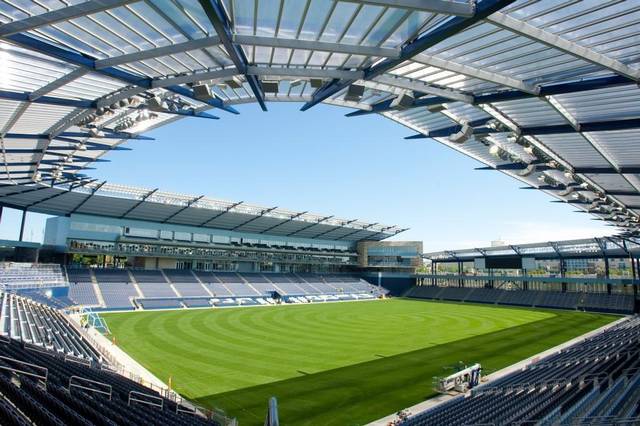
The stadium has a seating capacity of 18,467 seats, which can expand to 25,000 for concerts.[30] In 2013, the stadium hosted the MLS All-Star Game, the United States men’s national soccer team, and the MLS Cup, three of the most prestigious matches in the United States, and is the only stadium to host all three in the same year.[31]
On March 8, 2011 a partnership with Lance Armstrong’s Livestrong foundation was announced, thereby naming the stadium LIVESTRONG Sporting Park.[32] On January 15, 2013, Livestrong and Sporting Kansas City agreed to terminate the naming rights agreement amid a doping scandal involving Lance Armstrong.[33] On November 19, 2015, a ten year partnership with Children’s Mercy Hospital was announced, renaming the stadium to Children’s Mercy Park.[34]
Children’s Mercy Park is considered to be the top-rated soccer-specific stadium in MLS. It won the Venue of the Year Award in 2012, and was rated at the top of the list in Journey Magazine’s evaluation of the best stadium experiences in MLS in 2014.[35] The evaluation was based on the following factors: food/beverage, atmosphere, location, fans, access and overall return on investment.[36]
Children’s Mercy Park (then Sporting Park) was listed as the best stadium experience in MLS in 2014, according to a study by Paul Swaney of Stadium Journey.[37] The study graded the top 100 North American stadiums.[38] The criteria included concessions, overall atmosphere, the neighborhood and accessibility. Sporting Park was No. 17 overall on the list.[39] Over 2000 venues were critiqued in the report. Sporting Kansas City averaged just over 20,000 fans per game during the 2014 season.[40] Children’s Mercy Park’s elements and facts sheet[41] include:
| Capacity (Soccer) | 18,467 |
| Capacity (Concerts) | 25,000 |
| Capacity (Home Members Stand) | 2,000 |
| Suites | 36 |
| Clubs | 5 |
| Capacity (Field Club) | 400 |
| Capactiy (Member’s Club) | 2,000 |
| Capacity (Stadium Club) | 1,000 |
| Number of HDTVs | 326; 27 in Boulevard Members Stand |
| Stadium Size | 342,105 ft² |
| Size of Event Plaza | 124,000 ft² |
| Cubic Yards of Earth to be Excavated | 240,000 |
| HD Video Boards | 2 (South End: 2,016 ft²; North End: 550 ft²) |
| Locker Rooms | 6 |
The stadium is also equipped with a Suite Level 1 & 2 Club Lounge. The playing surface is Kentucky blue grass with a SubAir™ under-soil heating and cooling system. The field dimensions are 75 yards x 120 yards, larger than every field in the English Premier League. A canopy covers every seating section. The construction manager was Turner Construction and the Architect of the stadium was Populous.[42]
The stadium itself has six locker rooms: the Sporting Kansas City locker room, the visiting locker room, and four auxiliary locker rooms. It has four concert green rooms, three TV commentary booths, and four radio commentary booths. It is the first MLS stadium fully lighted for HDTV.[43]
One notable aspect of Children’s Mercy Park that aligns with several other soccer-specific stadiums used by the MLS is that it was designed by Populous. Populous is an American global architectural firm (which was formerly known as HOK Sport Venue Event) specializing in the design of sports facilities and convention centers, as well as planning of major special events. Populous has built 22 soccer-specific stadiums across the globe and has several soccer-specific stadiums either planned or currently in development. The list of soccer-specific stadiums built by Populous includes BBVA Compass Stadium, Houston, Texas, 2012, Childrens Mercy Park, Kansas City, Missouri, 2011, Soccer City, Johannesburg, South Africa, 2009, Sun Corp Stadium, Brisbane, Queensland, Australia, 2003, and Wembley Stadium, London, England, 2007. Stadiums in development include: DC United New MLS Stadium, 2018, Tottenham Hotspur Football Club, 2018 and Orlando City SC Downtown Stadium, 2017.[44] The philosophy of Populous is to “draw people together,”[45] with a focus on the experience a fan has in the stadium, and not the look of the stadium itself (making it a perfect architect for the new breed of soccer-specific stadiums). Todd C. Voth, Senior Principal Architect at Populous, believes at its core, good architecture creates more livable and viable cities:
What we’re trying to do as we grow is to think primarily about what kind of experience we can deliver to the guests and the fans that is tremendously memorable so they’ll look back and say, ‘Do you remember when? . . . That, for us, is really important. It’s just not about buildings. We moved beyond the building long ago. It’s really more about creating the district around the building for a more livable city, one that’s integrating the city with the activity.[46]

V. IMPORTANCE
The importance of soccer-specific stadiums lie in the expansion of soccer in the American market. MLS began play in 1996 with ten teams.[47] In 2005, twelve teams competed for the MLS Cup.[48] By 2010, the league hosted twenty teams.[49] There is a demand for soccer in several urban markets and soccer-specific stadiums are necessary for the league to expand.
The alternative to having soccer-specific stadiums is using football stadiums to field soccer games. This is problematic for several reasons. To begin with, a football field is a different size and utilizes different dimensions from a soccer field. Secondly, a football stadium is built to seat roughly 80,000 fans while a soccer game typically draws less than 20,000 fans.
Broadcasting soccer games in football stadiums where roughly 75% of the stadium is empty is unfavorable for marketing in that it does not emphasize expansion.[50] It is much more fruitful to have full, smaller stadiums surrounding fields that are actually tailored to the sport itself instead of borrowing stadiums from football and hoping for the best. One example is New York City FC, which is funded by Manchester City, and currently plays in Yankee Stadium, one of the largest baseball stadiums that seats roughly 50,000 people (downsized to 33,444 for soccer games).[51] No known timeline exists for an exit from Yankee Stadium.[52] MLS assumed that the financial backing of both Manchester City and the Yankees would boost the chances of locating a site for a soccer-specific stadium, so they put expansion ahead of the deal.[53] However, due to a funding gap and red tape regarding zoning regulations, New York City FC is still playing at Yankee Stadium.[54]
VI. LOCATION, MILLENIALS, AND URBANIZATION
The United States and Canada have roughly 350 million people, with an estimated 80 million people in the United States being soccer fans.[55] There are three national TV deals in place that pay the MLS roughly $90 million US annually.[56] The national broadcast partners in the United States are ESPN, ESPN2, ESPN Deportes, Fox Sports 1, Fox Sports 2, UniMás, and Univision Deportes. In Canada, MLS games are broadcasted on TSN, TSN2, RDS, and TVA Sports.[57]
However, the television contracts have not been fruitful in getting eyes on the sport itself. Due to low television ratings, it is very important to generate revenue through ticket and in-stadium sales. The largest proportion of MLS fans is the 18-34 demographic, with the 21-34 range being the most successful graphic.[58] Forty percent (40%) of this graphic lives in urban areas.[59] Research has shown that the stadiums with the lowest attendance are based in the suburbs, with the general rule of thumb being that for every mile a stadium is outside an urban demographic, that stadium loses one thousand fans on a nightly basis.[60] MLS is 10th in the world in domestic league match attendance with 19,149 fans/match in 2014. The EPL’s average attendance is over 36,000 and the Bundesliga is first in the world with over 43,000.[61] European soccer leagues provide hope for the economic prospects of MLS games, and the data related to stadium attendance provides a blueprint for stadium design, fan engagement, and marketing. As a result, it is very important to have a stadium in or near an urban area because the millennial demographic that accounts for MLS’ most successful draw does not want to go to the suburbs.
VII. FUTURE STADIUMS
D.C. United is scheduled to open its new stadium in Washington D.C. in 2018.[62] The construction cost at this point is between $180 million and $195 million, and it is designed, as many other soccer-specific stadiums are by the architectural firm Populous.[63] The location is Buzzard Point, close to Nationals Ballpark, near the center the District, and will be easily accessible by subway or car,[64] and will tap into the urban market, by locating the stadium itself downtown near or adjacent to other forms of entertainment. The stadium seats between 20,000 and 25,000 people and season tickets are available on D.C. United’s website,[65] and current renderings show an open field instead as opposed to its original enclosed stadium proposal. The renderings also show a multi-colored canopy with seats right up to the field of play.[66] This is a bit of a departure from the trend of enclosed stadiums, and whether this minimalist approach will coalesce well with D.C. United’s fanbase remains to be seen.
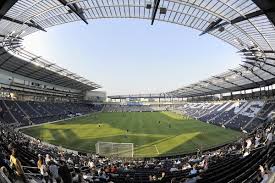 Orlando S.C. is also adopting the open field approach in its new stadium design. Coincidentally, Orlando City Stadium is designed by Populous.[67] The stadium will have an open plaza, where those passing by can see inside, since the field will be 10 feet below street level, and will have a seating capacity of 19,500, with the structural ability to expand to 25,000 in the future.[68] The field will be grass, with canopies over fans to protect them from the elements and to increase noise levels. A four times life size lion sculpture will overlook the entrance. Just before a game begins, the lion will rotate 180° to “watch” the action.[69] A festival plaza lined with palm trees on the south end of the plaza, just outside the main entrance at Church Street and Terry Avenue, is planned. A balcony-style bar just below the video scoreboard with a 360° view is planned as well, and a seating section on the north end will be dedicated to members of supporters’ clubs. As proposed, the supporters’ clubs will have no seats, but rails and extra room for “safe standing.”[70] The supporters’ section would also have its own “pub-style” area. Orlando City S.C. has partnered with Panasonic to provide the on-field LD boards and flat panel screens throughout the stadium.
Orlando S.C. is also adopting the open field approach in its new stadium design. Coincidentally, Orlando City Stadium is designed by Populous.[67] The stadium will have an open plaza, where those passing by can see inside, since the field will be 10 feet below street level, and will have a seating capacity of 19,500, with the structural ability to expand to 25,000 in the future.[68] The field will be grass, with canopies over fans to protect them from the elements and to increase noise levels. A four times life size lion sculpture will overlook the entrance. Just before a game begins, the lion will rotate 180° to “watch” the action.[69] A festival plaza lined with palm trees on the south end of the plaza, just outside the main entrance at Church Street and Terry Avenue, is planned. A balcony-style bar just below the video scoreboard with a 360° view is planned as well, and a seating section on the north end will be dedicated to members of supporters’ clubs. As proposed, the supporters’ clubs will have no seats, but rails and extra room for “safe standing.”[70] The supporters’ section would also have its own “pub-style” area. Orlando City S.C. has partnered with Panasonic to provide the on-field LD boards and flat panel screens throughout the stadium.
Los Angeles FC is currently building a soccer-specific stadium in the Los Angeles Memorial Sports Arena site that will hold 22,000 people that will cost around $250 million.[71] The goal of this stadium is to anchor the Figueroa corridor and capitalize on the views of the downtown skyline to become the home of “L.A.’s Team.”[72] The architectural firm Gensler has been tasked with designing the stadium, and they plan to provide emphasis on an exciting game-day experience aims to capture a more personal relationship between players and fans by creating an intimate European-style character. The overall architectural goal is similar to that of Populous designs. Significant ancillary programmatic elements will offer entertainment, retail and dining opportunities to stadium-goers, as well as for visitors to the park, the nearby museums and the University of Southern California (USC) campus.[73]
Minnesota United FC Stadium is projected to be built on a 35-acre site on the southeast corner of Snelling Avenue and University Avenue.[74] The location is in Saint Paul’s Midway neighborhood, halfway between Minneapolis and Saint Paul downtowns, and is served by the immediately-adjacent Snelling Avenue light rail station.[75] This location is particularly beneficial because it enables Minnesota United FC to draw from the two largest surrounding metropolitan areas. The proposed stadium, designed by Populous, will seat approximately 20,000, is to be completed in 2018, and will be privately financed, costing $120 million.[76] From renderings, the stadium appears to be enclosed, unlike the open-air designs of D.C. United and Orlando City S.C.’s proposed stadiums.
CONCLUSION
If MLS is looking towards expansion, then soccer-specific stadiums will be necessary. While every franchise has a goal of generating as much ticket revenue as the Seattle Sounders, putting soccer teams in a football stadium rarely works. It is much more economically viable to limit tickets and charge more for an intimate atmosphere that soccer fans want. Fans value the stadium experience as evidenced by the ratings and revenue drawn from Children’s Mercy Park in Kansas City.
The current planned soccer-specific stadiums attempt to adopt a European-style soccer atmosphere, which makes sense from an economic standpoint. Yet, there appears to be a disconnect between whether to enclose the stadium itself or design it as an open-air field. Nonetheless, all the new and future soccer-specific stadiums provide a canopy, in-stadium entertainment features, and a very unique pub culture in an effort to appeal to MLS’ biggest audience: millennials.
Additionally, planned soccer-specific stadiums are attempting to locate themselves in the heart of the downtown area in order to garner greater attendance. The one exception to the encapsulation of all these trends resulting in future soccer-stadiums for each NFL franchise is Mercedes-Benz Stadium in Atlanta. The anomaly, however, is Mercedes-Benz Stadium which is primarily designed for NFL football.
John Wilson is a graduate of Marquette University Law School. He received his Juris Doctor in 2016. Wilson is also a 2016 Sports Law Certificate recipient at Marquette through the National Sports Law Institute. During his law school tenure, Wilson was a staff member of the Marquette Sports Law Review (Volume 26), and was inducted into the Pro Bono Honor Society at Marquette. Prior to Marquette, Wilson earned his Bachelor of Arts in Communications and Film Studies from DePauw University.
[1] See Texas State Historical Association, Hunt, Lamar, https://tshaonline.org/handbook/online/articles/fhu99 (last visited Apr. 14, 2016).
[2] See id.
[3] See id.
[4] See id.
[5] Nicholas Jervey, Ohio Stadium is the Right Host Venue for a World Cup, Eleven Warriors (June 4, 2015), http://www.elevenwarriors.com/ohio-state-athletics/2015/06/54342/ohio-stadium-is-the-right-place-for-the-world-cup
[6] Columbus Crew Stadium – Origins, http://www.liquisearch.com/columbus_crew_stadium/origins (last visited Mar. 31, 2016).
[7] Id.
[8] Id.
[9] Id.
[10] Id.
[11] Columbus Crew, http://www.thesportsdb.com/team/134152 (last visited Apr. 14, 2016).
[12] Columbus Crew 1999, http://www.mlssoccer.com/history/club/columbus/1999 (last visited Apr. 14, 2016).
[13] Id.
[14] Adam Jardy, Crew’s Home Has New Name: Mapfre Stadium, Columbus Dispatch, Mar. 14, 2015.
[15] Id.
[16] Soccer-specific Stadium, https://pediaview.com/openpedia/Soccer-specific_stadium (last visited Apr. 14, 2016).
[17] Id.
[18] Id.
[19] Matt Pollard, MLS 3.0: Evolution of the Soccer-Specific Stadium, Last Word on Sports (Mar. 13, 2015), http://lastwordonsports.com/2015/03/13/mls-3-0-evolution-of-the-soccer-specific-stadium/.
[20] Id.
[21] See id.
[22] See infra section IV.
[23] See e.g. Tim Newcomb, Defining Characteristics for New Wave of MLS Soccer-specific Stadiums, Sports Illustrated, Nov. 5, 2015.
[24] Pollard, supra note 19.
[25] Id.
[26] Steve Argeris and Mark S. Nagel, An Investigation of Major League Soccer Attendance, 4 J. Venue & Event Mgmt. 2, https://sc.edu/study/colleges_schools/hrsm/research/research_journals_and_publications/jvem_pdfs/vol4_no2/investigation_of_major_league_soccer_attendance.pdf (last visited Apr. 14, 2016).
[27] Joe Prince-Wright, Rise of MLS Stadia Continues: How Have Things Changed in Last Five Years?, NBC Sports – Soccer (Sept. 24, 2014), http://soccer.nbcsports.com/2014/09/24/rise-of-mls-stadia-continues-how-have-things-changed-in-last-five-years/.
[28] See e.g. Stephen Whiting, Comparing D.C. United’s Proposed Stadium to Other MLS Soccer-Specific Stadiums, SB Nation – Black and Red United (Dec. 18, 2012), http://www.blackandredunited.com/stadium-news/2012/12/18/3773460/dc-united-new-stadium-mls-soccer-specific-buzzard-point ; see also Costs of New MLS Stadiums, http://www.tigerdroppings.com/rant/p/40061596/cost-of-new-mls-stadiums/ (last visited Apr. 14, 2016);
[29] Major Events in Children’s Mercy Park History, http://www.sportingkc.com/childrens-mercy-park/major-events (last visited Mar. 31, 2016).
[30] Living with Lance – the Livestrong Aftermath, http://sportsbusinessnews.com/content/living-lance-%E2%80%93-livestrong-aftermath (last visited Mar. 31, 2016).
[31] Children’s Mercy Park, https://en.wikipedia.org/wiki/Children%27s_Mercy_Park (last visited Mar. 31, 2016).
[32] Sporting Club Partners with LIVESTRONG, http://www.sportingkc.com/post/2011/03/08/sporting-club-partners-livestrong (last visited Mar. 14, 2016).
[33] Darren Rovell, Sporting KC Stadium Gets New Name, ESPN (Jan. 16, 2013), http://espn.go.com/sports/endurance/story/_/id/8847899/livestrong-major-league-soccer-sporting-kc-end-stadium-naming-rights-deal.
[34] Kurt Austin, Children’s Mercy and Sporting Kansas City Announce Youth Health and Pediatric Sports Medicine Initiative, SportingKC (Nov. 19, 2015), http://www.sportingkc.com/post/2015/11/19/children%E2%80%99s-mercy-and-sporting-kansas-city-announce-youth-health-and-pediatric-sports.
[35] See Sporting Kansas City Accolades, http://www.sportingkc.com/club/accolades (last visited Mar. 14, 2016).
[36] Kurt Austin, Sporting Park Ranked No. 1 Overall Stadium Experience in Major League Soccer, SportingKC (Nov. 21, 2014), http://www.sportingkc.com/post/2014/11/21/sporting-park-ranked-no-1-overall-stadium-experience-major-league-soccer.
[37] Peter Galindo, Sporting Park Listed as Best MLS Stadium Experience of 2014, Bleacher Rep. (Jan. 9, 2015), http://bleacherreport.com/articles/2325159-sporting-park-listed-as-best-mls-stadium-experience-of-2014.
[38] Id.
[39] Id.
[40] Id.
[41] CHILDREN’S MERCY PARK FACT SHEET, http://www.sportingkc.com/stadium/fact-sheet (last visited Apr. 14, 2016).
[42] Id.
[43] Id.
[44] Populous (Company), Wikipedia, https://en.wikipedia.org/wiki/Populous_(company)#Association_football (last visited Mar. 31, 2016); see also Work, Populous, http://populous.com/work/ (last visited Apr. 14, 2016).
[45] Jan Dumay, Populous: Architecture for the People, 435 Mag. (May 2015), http://www.435mag.com/May-2015/Populous-Architecture-for-the-People/
[46] Id.
[47] Steve Davis, How Big is Too Big for Major League Soccer?, Fusion (Jun. 12, 2015), http://fusion.net/story/139588/major-league-soccer-expansion/.
[48] Id.
[49] Id.
[50] See Sam Sturgis, Why the Future of Major League Soccer is Downtown, CityLab (Nov. 20, 2014), http://www.citylab.com/design/2014/11/why-the-future-of-major-league-soccer-is-downtown/382942.
[51] Major League Soccer, New York City FC Outline Plans for Yankee Stadium’s Baseball-to-soccer Conversion, (Apr. 21, 2014) http://www.mlssoccer.com/post/2014/04/21/new-york-city-fc-outline-plans-yankee-stadiums-baseball-soccer-conversion?utm_source=Facebook&utm_medium=referral&utm_content=News&utm_campaign=Unpaid.
[52] Jason Davis, Four MLS Stadiums, U.S. Nat’l Soccer Players (May 6, 2015), http://ussoccerplayers.com/2015/05/four-mls-stadiums.html.
[53] Id.
[54] Id.
[55] Davis, supra note 48.
[56] Id.
[57] See Major League Soccer on Television, Wikipedia, https://en.wikipedia.org/wiki/Major_League_Soccer_on_television (last visited Apr. 14, 2016).
[58] Sturgis, supra note 51.
[59] Id.
[60] Id.
[61] Pollard, supra note 19.
[62] Major League Soccer, DC United Exec Jason Levien Dishes out Details on New Stadium Planned for 2018, (Dec. 18, 2015), http://www.mlssoccer.com/post/2015/12/18/dc-united-exec-jason-levien-dishes-out-details-new-stadium-planned-2018.
[63] Ben Bromley, New D.C. United Stadium Renderings, by Architecture Firm Populous, Released, Black and Red United, (Feb. 15, 2014) http://www.blackandredunited.com/stadium-news/2014/2/15/5414518/dc-united-stadium-project-buzzard-point-architect-populous.
[64] Pollard, supra note 19.
[65] Id.
[66] Clinton Yates, D.C. United Reveals Stadium Renderings, and Something Feels Off, Wash. Post: Sports Blog (Jan. 21, 2016), https://www.washingtonpost.com/news/dc-sports-bog/wp/2016/01/21/d-c-united-reveals-stadium-renderings-and-something-feels-off/.
[67] Major League Soccer, Orlando City Unveils Renderings for New Downtown Stadium, (Jun. 10, 2014),\ http://www.orlandocitysc.com/post/2014/06/10/orlando-city-unveils-renderings-new-downtown-stadium.
[68] Nick Firchau, Orlando City SC to Play Entirety of Debut MLS Season at Citrus Bowl, New Stadium to Open in 2016, Major League Soccer, (Apr. 21, 2014) http://www.mlssoccer.com/post/2014/04/21/orlando-city-sc-play-entirety-debut-mls-season-citrus-bowl-new-stadium-open-2016.
[69] Orlando City SC, Orlando City Privately Funds Stadium Construction, Increases Capacity and Adds Enhanced Amenities, Major League Soccer, (May 29, 2015) http://www.orlandocitysc.com/post/2015/05/29/orlando-city-privately-funds-stadium-construction-increases-capacity-and-adds.
[70] Major League Soccer, Orlando City SC Release Renderings of New Downtown Stadium to be Completed in 2016, (Jun. 10, 2014) http://www.mlssoccer.com/post/2014/06/10/orlando-city-sc-release-renderings-new-downtown-stadium-be-completed-2016.
[71] Kevin Baxter, Expansion L.A. Soccer Team Plans New Stadium on Sports Arena Site, L.A. Times (May 17, 2015), http://www.latimes.com/sports/soccer/la-sp-la-soccer-stadium-20150518-story.html.
[72] Gensler, Los Angeles Football Club Stadium, http://www.gensler.com/projects/los-angeles-football-club-stadium (last visited Mar. 31, 2016).
[73] Id.
[74] Frederick Melo, With St. Paul Soccer Stadium Comes Visions of Movie Theater, Hotel, Parks and More, Pioneer Press, (Feb. 18, 2016) http://www.twincities.com/2016/02/18/midway-snelling-site-plan-outlines-movie-theater-hotel-stadium-park-plaza/.
[75] Id.
[76] Id.


